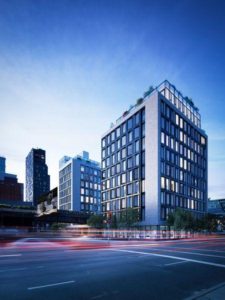Fire protection system components include much more than just automatic sprinklers and fire alarms. But these two components are what most people think about whenever they hear about fire protection systems because they are the most visible to the public. The truth is any fire suppression system is made up of many different components. In today’s post, we will take a closer look at the most common fire protection and suppression system components.
Fire Command Center
The fire command center is the brains behind most fire protection systems. It is usually installed in a centralized location, such as in the lobby or on the main entrance floor, and it displays the status of the building’s fire protection systems, including its detection devices, alarms, communication systems, and more. Most command centers also feature manual controls for many of these systems.
In NYC, the primary components of a fire command center need to include:
- Fire alarm controls
- Auxiliary Radio Communication System (ARCS)
- Elevator controls
- Smoke control system panel
- Post-fire smoke purge system control panel
- FDNY telephone system
- Public address system
- Manual release for automatic-closing doors
Fire Department Connections
Fire department connections are what the fire department connect their hoses and pumping equipment to when fighting fires. NYC fire code requires at least one connection for every 300 feet of exterior wall length, and they need to be located where they won’t obstruct firefighting operations.
Standpipes
A standpipe is the piping system that delivers water from a main source to hose connections in key locations throughout a building. They are designed to provide firefighters with convenient access to water throughout the building. The NYC Building Code covers five possible standpipe configurations:
- Automatic dry
- Automatic wet
- Manual dry
- Manual wet
- Semi-automatic dry
Automatic Fire Sprinklers
Automatic sprinklers do not require human interaction to be activated. These types of sprinklers feature a thin tube of glass that breaks when heated by fire. Once the tube breaks, the sprinkler sprays water to suppress the fire. Because these types of sprinkler heads are automatic, only those located in the fire zone engage.
Automatic sprinkler heads are not only used in wet systems. They can also be used in systems involving foam, carbon dioxide, and halon. These substances are usually used in areas where discharging water can be hazardous.
Fire Alarm Pull Stations
Fire alarm pull stations are designed for occupants to notify the building of fire in the event a fire is detected but it hasn’t triggered any alarms or sprinklers yet. Once the handle is manually pulled down by the user, it completes a circuit and locks the handle in the activated position, sending an alarm to the fire alarm control panel.
Fire Pumps
Fire pumps are used to deliver a reliable water supply for fire protection systems, but they aren’t mandatory fire suppression system components. In an automatic sprinkler system, this type of pump is often called a sprinkler booster pump. Because fire pumps are normally powered by electricity, NYC fire codes list several requirements for the backup power systems for fire pumps. This is to help ensure continued operation in the event the building’s electric service is interrupted.
Auxiliary Radio Communication System (ARCS)
The ARCS is the communication system used by firefighters. To satisfy NYC code requirements, it needs to meet the following conditions:
- Wireless
- Bi-directional
- Provide exclusive radio frequencies for the FDNY
- Operate independently from the building’s other electrical and communication systems
All new commercial constructions exceeding 75 feet, and new residential constructions exceeding 125 feet are required to have an auxiliary radio communication system installed.
Post-Fire Smoke Purge & Smoke Control Systems
Post-fire smoke purge systems operate after a fire to help quickly remove any residual smoke from the interior spaces. This system can be mechanical, passive, or both. Mechanical systems use fans to control smoke movement, while passive systems use no power, instead using smoke barriers to limit the smoke’s movement.
A smoke control system, on the other hand, is designed to keep smoke out of the elevator shafts and staircases. This is an important fire protection system component because these are the areas used by occupants to evacuate the building.
Are Your Fire Protection System Components Up to Code?
If any component in your fire protection system isn’t up to NYC code, you are not only risking severe fines and penalties, but also the lives of those who live or work in your building. Make sure your system is up to code, so it operates exactly as intended. Contact Metro Fire Inspections today to schedule your next inspection. Just give us a call at 631-994-0081 or send us a message online. We’ll make sure your components are up to code and ready to work should you ever need them.





